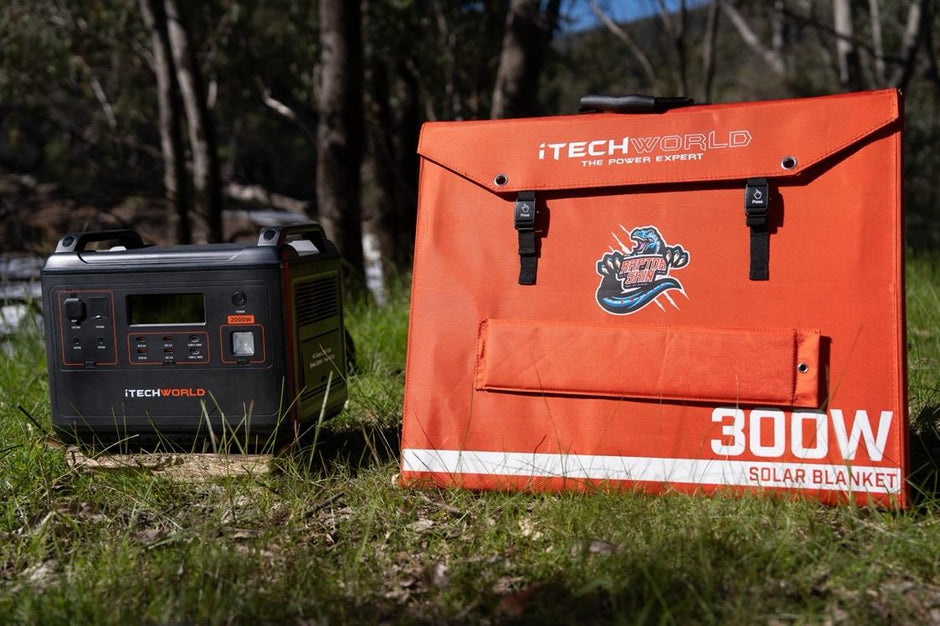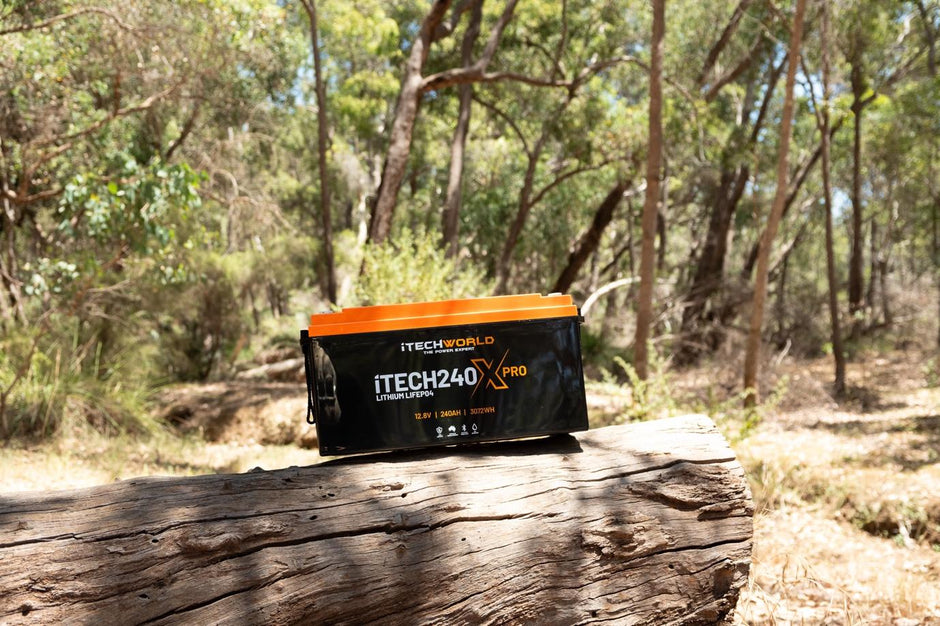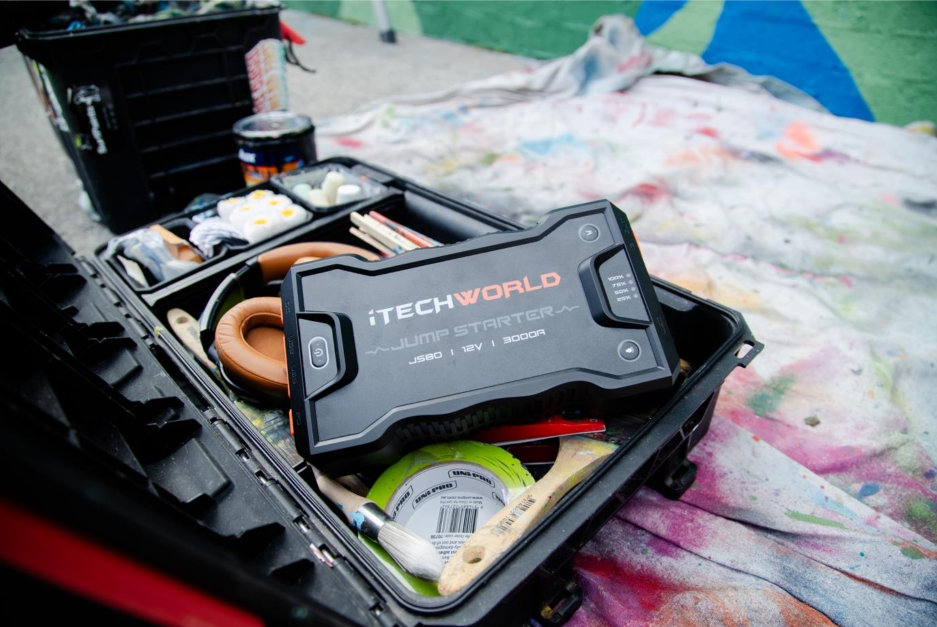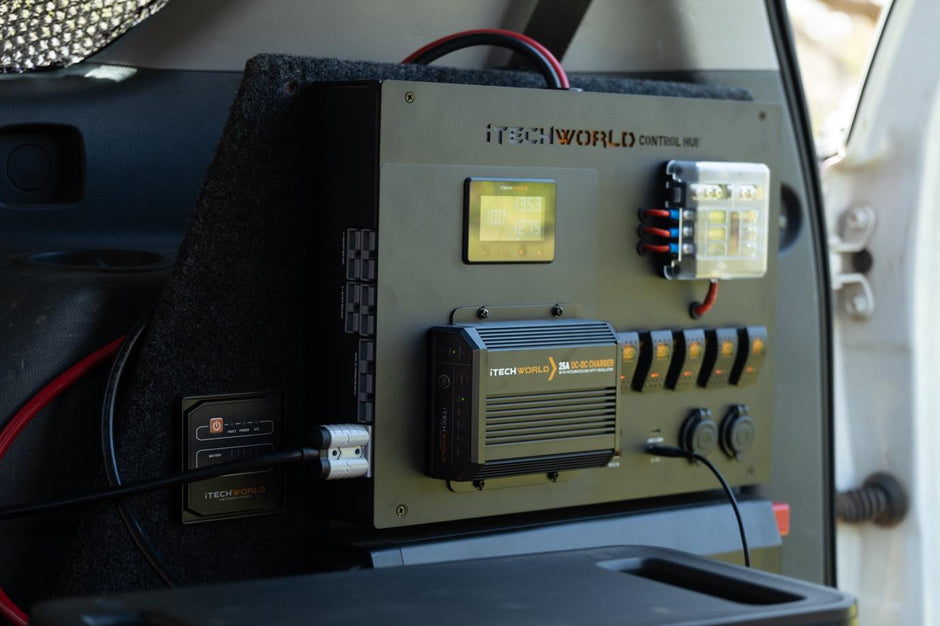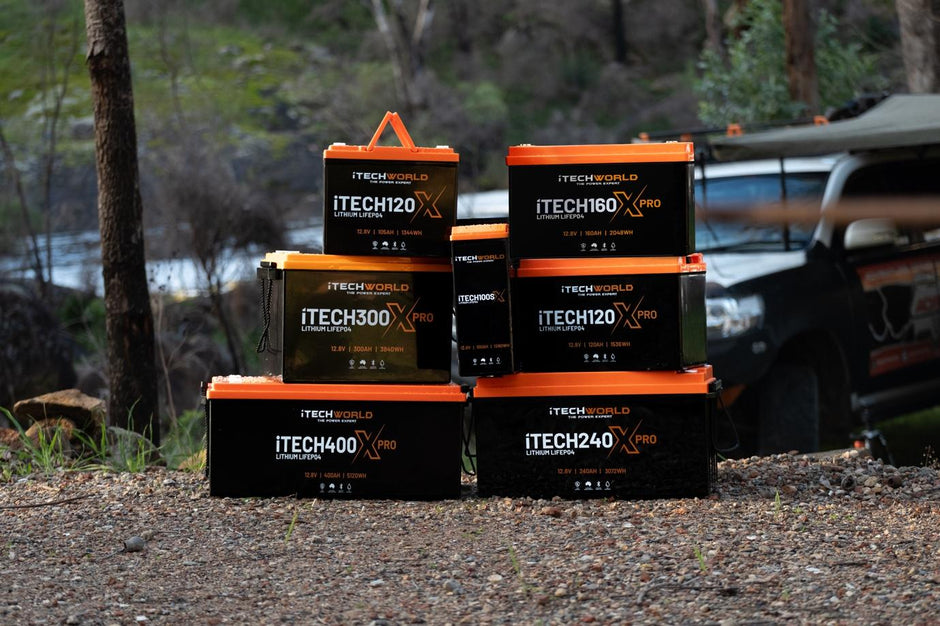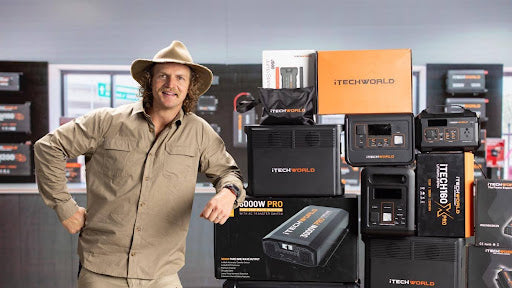Solar generators provide an easy, reliable source of quiet, emissions-free power wherever you are. iTechworld’s range includes options for everything from weekend trips to complete off-grid systems: here’s how they work and how to pick the model that suits your needs.

What is a Solar Generator?
A solar generator is essentially a portable power station (a battery and an inverter combined in one convenient housing) paired with solar charging options (folding solar blankets, flexible panels or framed panels). The result? A portable system that stores energy and supplies AC / DC power without fumes, noise or fuel. iTechworld’s solar generator kits pair power stations (PS300, PS800, PS1800 PRO, PS2000, PS3600 PRO, etc.) with matching solar blankets to create mobile, plug-and-play kits.
Why Choose a Solar Generator?
Quiet & clean: no combustion engine, so no toxic fumes, flammable fumes or noise pollution on site.
Low operating costs: solar input reduces or eliminates ongoing fuel expenses.
Simple operation: plug appliances straight in or connect to your vehicle or panels.
Portable backup: ideal for weekend trips, remote worksites or emergency home power.
Key Specifications (and How To Read Them)
When choosing a solar generator, focus on three core specs:
Battery capacity (Wh / Ah): Determines how long devices will run. Match the solar generator kit’s capacity (e.g. 120Ah / 1536Wh class) to the total combined load you want to run. There should be a small buffer, just in case!
Inverter rating (continuous & surge): Tells you what appliances the unit can run. Continuous output is the steady power (e.g., 800W, 1800W, 2000W); surge shows short bursts for momentary spikes. Check both numbers for any appliance or device you’re planning to use with your solar generator.
Solar input & recharge speed: MPPT-enabled inputs and higher solar wattage mean quicker recharge times. Matching solar blanket / panel wattage to the station’s input limit gives you the best results.
Typical iTechworld Kits (and What They’re Good For)
Essential (PS300 + 100W): lightweight, ideal for day trips and charging devices. Great for phones, lights and small 12V appliances,
Deluxe (PS800 + 200W): a mid-range option for longer trips or light home backup; it’ll run fridges and power tools for shorter periods.
Pro (PS1800 PRO + 200W): higher capacity and inverter power for multi-day trips or heavier loads.
Elite (PS2000 + 300W): top-end kit for extended off-grid use and higher continuous loads — suited to larger fridges, multiple appliances or power tools.
Exact runtime depends on load and recharge conditions. Use the simple Wh ÷ W rule to estimate: divide your battery watt-hours by the appliance’s watts, and allow a buffer of around 10-15%.

How to Size a Solar Generator for Your Needs
List the devices you want to run and note their watt draw (for fridges / ACs, check the start / peak wattage).
Add up the daily hours each device runs to get the total daily Wh demand.
Choose a power station with at least the capacity you worked out in the previous step (plus a buffer for any losses).
Pick a solar blanket / panel size that will recharge the station within daylight hours you’ll have (obviously, a 300W blanket will recharge faster than a 100W blanket).
Practical Tips for Better Performance
Position solar blankets flat and angled to the sun; small tilts matter.
Avoid shading; cells quickly reduce total output when not in direct sunlight.
For vehicle use, secure the station and keep vents clear.
For emergencies, prioritise critical loads (medical devices, fridge, comms) and run them on rotation.
Consider extra blankets or parallel panels to speed recharges on multi-day trips.
Quick FAQs
Q: Can I run a fridge all night?
A: Yes, many iTechworld stations can run 12V fridges all night, but runtime depends on fridge draw and battery size. Estimate with Wh ÷ W and, as always, add a buffer for losses!
Q: Are solar blankets durable?
A: iTechworld folding blankets use robust materials (ETFE Raptor Skin on some models) and heavy-duty canvas. They’re built for travel, but you should treat them like tech: avoid sharp folds and store them dry.
Q: Can I expand capacity later?
A: Some power stations are expandable (like the PRO range!), but you should always check the station’s solar input limits before adding extra panels.

Conclusion
A solar generator is power that travels with you… quiet, clean and ready when you need it.
iTechworld’s solar generator kits pair portable power stations with tough solar blankets and panels, so pick the right battery size, inverter rating, and solar input for your devices, and you’ll get dependable off-grid power any of the hassle.
Need some more help or looking for some advice? Get in touch with us at sales@itechworld.com.au or 1300 483 249 , or come visit us at 291 Great Eastern Highway, Burswood, WA 6100!

